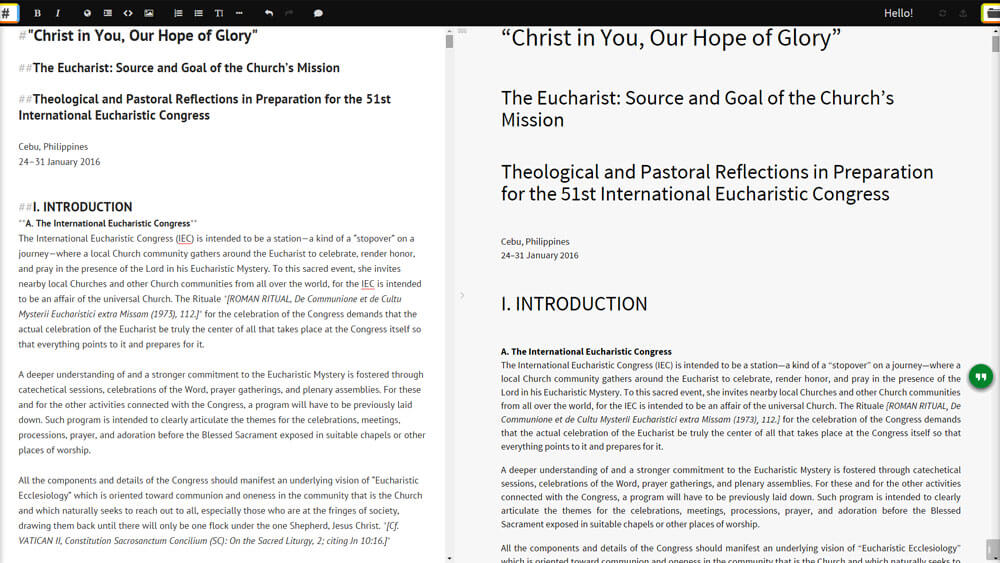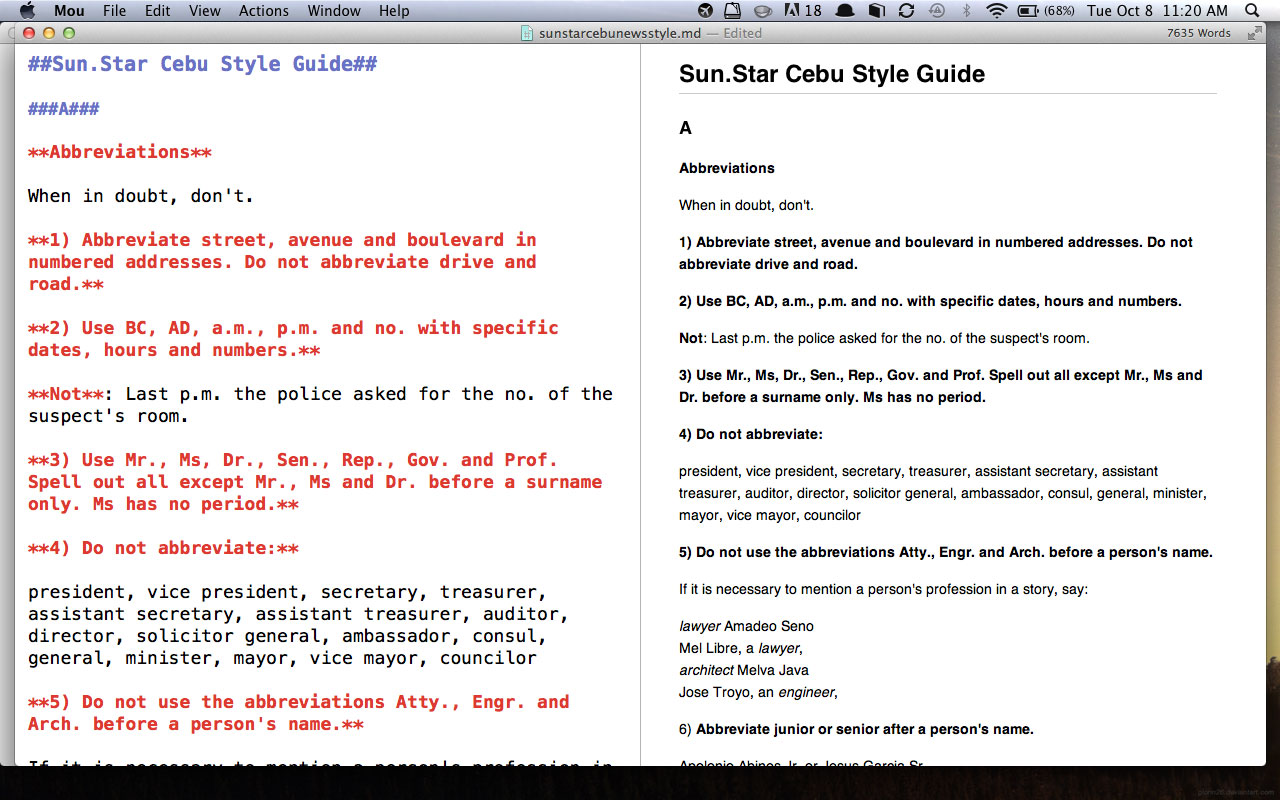This week, our startup updated the official guide to the International Eucharistic Congress 2016 that will be held in Cebu this January. The update contained new information including the complete schedule, profile of speakers as well as a News sub-section that will contain updates leading to and during the actual event.
Among the new information that went into the update was the basic text of the congress or the “Theological and Pastoral Reflections in Preparation for the 51st International Eucharistic Congress.” It is a lengthy treatise on the Eucharist and the Church’s mission.
The material we had to work on and format for the app was a 53-page PDF document with 154 footnotes.

MARKING UP WITH MARKDOWN. Using StackEdit to format documents using Markdown for use in our IEC 2016 mobile app.
When we format static articles for inclusion into our apps, we use Markdown. The markup language is so easy to use it speeds up the coding of documents. Before we transitioned to Markdown, we used to manually code documents using HTML and CSS. For shorter articles, this was fine. But it was tedious for longer documents.
With Markdown, it took us less than an hour to prepare the IEC basic text for inclusion into the app. What took time was manually coping the text from the PDF file.
For Markdown formatting, our current tool is Stackedit. The online service offers excellent Markdown syntax support with offline storage as well as options to synchronize with your Dropbox and Google Drive accounts.
While content management systems make it so easy to publish stories and format text, a basic HTML and CSS knowledge will go a long way in giving a journalist an edge professionally. Knowing Markdown will sharpen that edge.
The post Formatting articles for apps: Markdown to the rescue appeared first on Leon Kilat : The Tech Experiments.


